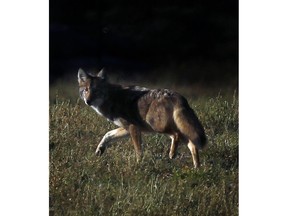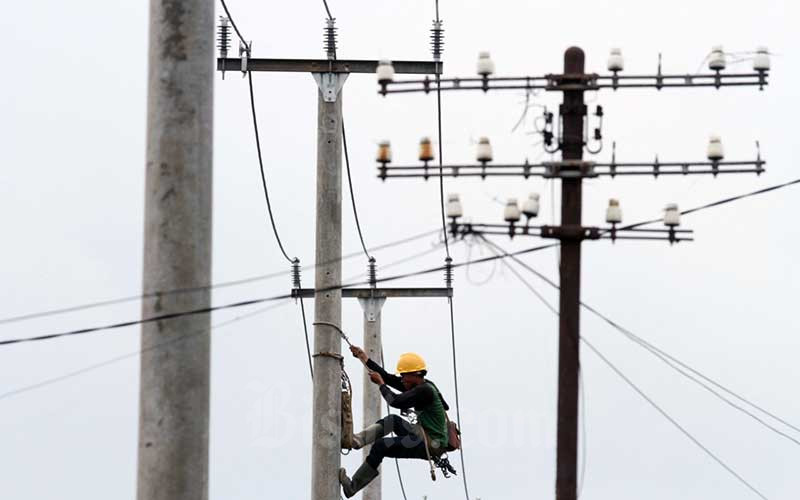[ad_1]
Ottawa’s current strategy dates back to 2013, and it wasn’t a good one, say advocates who want a progressive ‘co-existence’ policy
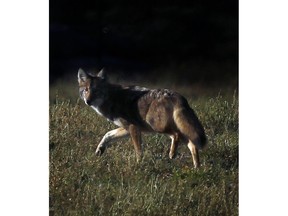
Article content
When a coyote snatches a family pet right before its owner’s horrified eyes, or a bear trawling suburban backyards for birdseed gets shot by police, it often makes the news.
The city is set to update its strategy for dealing with wildlife in June, and advocates are hoping it will be a chance for a do-over. Current procedures date back to 2013.
Article content
Donna DuBreuil, president of the Ottawa-Carleton Wildlife Centre, considers the more than 10-year-old strategy to be a failure.
Advertisement 2
This advertisement has not loaded yet, but your article continues below.
THIS CONTENT IS RESERVED FOR SUBSCRIBERS ONLY
Subscribe now to read the latest news in your city and across Canada.
- Exclusive articles from Elizabeth Payne, David Pugliese, Andrew Duffy, Bruce Deachman and others. Plus, food reviews and event listings in the weekly newsletter, Ottawa, Out of Office.
- Unlimited online access to Ottawa Citizen and 15 news sites with one account.
- Ottawa Citizen ePaper, an electronic replica of the print edition to view on any device, share and comment on.
- Daily puzzles, including the New York Times Crossword.
- Support local journalism.
SUBSCRIBE TO UNLOCK MORE ARTICLES
Subscribe now to read the latest news in your city and across Canada.
- Exclusive articles from Elizabeth Payne, David Pugliese, Andrew Duffy, Bruce Deachman and others. Plus, food reviews and event listings in the weekly newsletter, Ottawa, Out of Office.
- Unlimited online access to Ottawa Citizen and 15 news sites with one account.
- Ottawa Citizen ePaper, an electronic replica of the print edition to view on any device, share and comment on.
- Daily puzzles, including the New York Times Crossword.
- Support local journalism.
REGISTER / SIGN IN TO UNLOCK MORE ARTICLES
Create an account or sign in to continue with your reading experience.
- Access articles from across Canada with one account.
- Share your thoughts and join the conversation in the comments.
- Enjoy additional articles per month.
- Get email updates from your favourite authors.
Sign In or Create an Account
or
Article content
“If it had been the strategy the community organizations had asked for, we wouldn’t have bears shot and coyotes trapped,” she said.
Advocates want the city to introduce policies that are more humane for animals, while protecting people with evidence-based information. But they’re also skeptical that the new strategy will actually be much of an improvement, or that they will have enough time to respond once the report lands.
The recommendations were originally scheduled to be released in November. The process had taken longer than expected, said DuBreuil.
Here are some things community groups want to see in the updated strategy:
Q: What’s the hope for the updated strategy?
A: Big picture, wildlife and environmental groups want to see an overarching co-existence model. This means acknowledging that humans have settled in an ecosystem that predated us, with an understanding that humans share a complex ecosystem with animals.
“The 2013 strategy does mention coexistence but it’s so far from the practice,” said William van Geest, program manager for Ecology Ottawa. “Animals are considered a nuisance to be dealt with.”
Advertisement 3
This advertisement has not loaded yet, but your article continues below.
Article content
Co-existence essentially calls for people to stop the us-vs-them approach to wildlife. How can we do that when coyotes are grabbing cats off porches? Through public education, said DuBreuil.
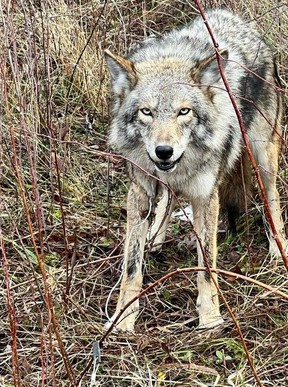
“Coyotes live among us. Don’t keep cats out overnight. If your dog is running loose during the coyote denning season, they will probably be attacked. There are 300 to 400 dog bites reported every year. Coyotes? Zero. We have to keep a perspective on this.”
DuBreuil wants the strategy to include a plan for the city to partner with wildlife organizations to deliver information to the public. City councillors are a good conduit for information specific to their communities about neighbourhood-specific incidents.
Which wildlife should be considered?
Van Geest says the approach has to consider all animals, not just large mammals. Ottawa does not have Bird Friendly City certification, for example. As of last November, 24 municipalities across the country had the certification.
Ottawa’s current strategy has a very narrow perspective — it’s focused on animal-human interactions, said Paul Johanis, the chair of the Greenspace Alliance of Canada’s Capital. As it stands, Ottawa doesn’t have a biodiversity policy. Other cities including Toronto, Edmonton and Calgary do.
Advertisement 4
This advertisement has not loaded yet, but your article continues below.
Article content
A forward-thinking policy would establish a list of priority species and their optimum population levels in Ottawa and embed that in a broader biodiversity policy, which would guide decisions about how to react when wildlife populations are too high or too low, Johanis argues.
“It’s a more rational way to embed these policies. Let’s not look at it on an emotional level. Let’s look at it on a scientific level.”
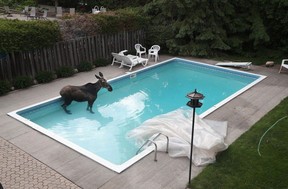
Q: What is a large mammal response protocol?
A: When residents have a bear in their backyard or a moose in their swimming pool, it’s often unclear who they should call. A clear protocol would tell residents the roles of different layers of government, including the NCC, the provincial Ministry of Natural Resources, city bylaw and police.
Each of these agencies should have a clearly defined role, there needs to be coordination and the public should know how it works. The NCC should be a key partner in this and already has trained wildlife officers, said DuBreuil. “These animals don’t come to people’s backyards by helicopter, they come from NCC lands.”
DuBreuil also argues that animals should be relocated only as a last resort. It’s not a solution to tranquilize a bear and relocated it to a rural area where there’s a bear hunt.
Advertisement 5
This advertisement has not loaded yet, but your article continues below.
Article content
The bear that was shot in April 2023 spent seven to ten days in Coun. Laine Johnson’s west-end College Ward before moving on to Kanata. The problem was the bear was getting accustomed to people and saw backyard feeders as a source of food. People were also getting used to the bear and were getting fond of it, said Johnson. Police were concerned because there’s more danger of a negative interaction when animals and humans are habituated to each other.
People are still getting bounced from one level of government to another when they have a question or concern about wildlife, said Johnson. It happened to a member of her staff earlier this month when the staffer had concerns about a sickly-looking coyote repeatedly sighted in the City View neighbourhood.
“Many jurisdictions have a finger in the pie of our green space. They all have some, but not all of the responsibility,” she said. “It should be easy to make one call and ensure that the correct responding agency knows about the situation. We have a wealth of expertise.”
The 2013 strategy called for the city to create a position for a city wildlife officer. That didn’t happen, but Johnson believes it will be among the recommendations in the updated strategy.
Advertisement 6
This advertisement has not loaded yet, but your article continues below.
Article content
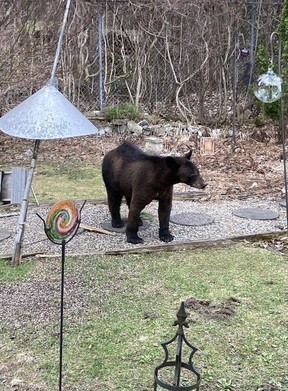
Q: What are eco-passages and why should these be in the strategy?
A: These are the corridors that allow animals to move around with less risk of getting injured in traffic. In some cases, passages can be built under roads. There are passages for aquatic animals such as turtles and others for terrestrial animals. Cameras set up in passages built under Terry Fox Road in Kanata have captured some unexpected users, including muskrats and otters, said DuBreuil.
When the city develops new drainage systems or roads, it has to consider how it will affect the way animals move around, she said. “If you don’t allow animals a safe passageway, they are more likely to end up in your backyard.”
Experience has suggested good intentions are not enough. A study of the population of Blanding’s turtles on Terry Fox Drive released last September concluded that the Blanding’s population had declined by 70 per cent over 10 years, even though a developer had introduced measures such as wildlife fencing. The turtles, which are protected under the provincial Endangered Species Act, had been squeezing under the fences and were struck by passing vehicles.
Advertisement 7
This advertisement has not loaded yet, but your article continues below.
Article content
There’s also a need for an enforceable protocol to protect animals during the construction process with conditions such as a wildlife mitigation plan and a construction site management plan, said DuBreuil.
“The city drafted a protocol in 2015, but that has been watered down to guidelines,” she said. “There has to be some teeth in it. We protect trees. We should protect wildlife.”
Beavers will be the test of the updated strategy, said DuBreuil. The city traps 150 beavers a year and spends thousands on it, said DuBreuil, who wants to see the city use modern flow devices to mitigate flooding while allowing beavers to do their essential services on the landscape.
Wetlands are at the nexus of a lot of protective factors, said Angela Keller-Zerzog, executive director of Community Associations for Environmental Sustainability (CAFES) Ottawa. Wetlands offer protection from forest fires, help fight climate change, improve water quality and hold stormwater. But they are also under increasing threat of development, she said.
“There is a big opportunity in the wildlife strategy to look at wetland habitat. Wetlands are particularly precious and particularly threatened.”
Advertisement 8
This advertisement has not loaded yet, but your article continues below.
Article content
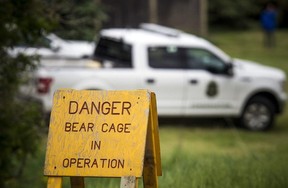
Q: What will happen next?
A: The report on an updated strategy is due out in June. It will outline the city’s public engagement to date and recommend changes, based on public engagement and feedback received, said Nick Stow, program manager of natural system and rural affairs with the City of Ottawa.
The city conducted two surveys attracting 806 respondents and two public engagement sessions with 135 attendees in 2023.
Among the issues raised: Residents want large wildlife to be tranquilized and relocated when necessary. Respondents said protecting the animal should be the top priority when the city is responding to reports of large wildlife in populated areas. But residents were also concerned about coyotes around children and pets and that bears might end up in their neighbourhood.
“City staff regularly consult with subject matter experts, other municipalities, and levels of governments in the development of policies and programs and current best practices for managing human-wildlife interactions,” said Stow.
“Until this report has been considered by committee, staff are unable to provide further comment at this time.”
Advertisement 9
This advertisement has not loaded yet, but your article continues below.
Article content
It’s often a last-minute scramble for community organizations to provide feedback when city staff make recommendations, said DuBreuil, who fears community groups will have only a week to consider the recommendations before they have a one-in-a-decade chance to address elected politicians. Even then, delegates get only five minutes to speak when addressing a committee.
“Engagement is not a one-way street. It is not enough to ask the public for their opinion and then disengage,” she said.
The report has to go through three city committees — environment, housing and rural affairs — before it goes to city council, said Johnson.
“That shows how much red tape there is around wildlife in Ottawa.”
Our website is your destination for up-to-the-minute news, so make sure to bookmark our homepage and sign up for our newsletters so we can keep you informed.
Recommended from Editorial
Article content
Share this article in your social network
[ad_2]
Ottawa Citizen
